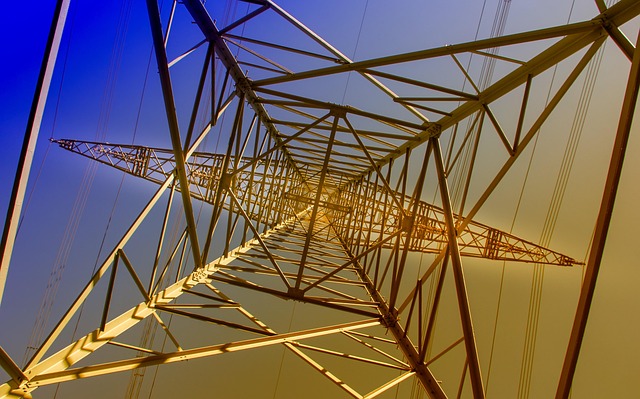Leak detection sensors powered by digital controls have revolutionized water management. These sensors combine pressure monitoring, moisture detection, and advanced algorithms to identify subtle leaks instantly via email, SMS, or apps. Digital controls offer real-time data, automate processes, and allow customizable alert settings, minimizing damage and disruption. Strategically placed sensors monitor underground pipes, residential fixtures, and commercial buildings, preventing significant water losses and associated costs. Integrating alert systems with existing infrastructure enhances leak detection effectiveness, leading to substantial cost savings and environmental benefits across various industries.
Leak detection sensors with alerts are transforming how we manage water resources, minimizing damage and optimizing efficiency. This article delves into the technology behind these innovative solutions, highlighting their benefits when integrated with digital controls for real-time monitoring and alerting. We’ll explore various sensor types, optimal placement strategies, and seamless integration with existing infrastructure. Additionally, through compelling case studies, we’ll demonstrate the significant impact of successful implementations, showcasing how these sensors are revolutionizing water management practices.
- Understanding Leak Detection Sensors: The Technology Behind Them
- Benefits of Implementing Digital Controls for Alerts
- Types of Sensors and Their Placement Strategies
- Integrating Alert Systems with Existing Infrastructure
- Case Studies: Successful Implementations and Their Impact
Understanding Leak Detection Sensors: The Technology Behind Them

Leak detection sensors, powered by sophisticated technology, have revolutionized water management. These sensors employ a blend of advanced techniques, including pressure monitoring and moisture detection, to identify even the subtlest hints of leaks within plumbing systems. At their core, digital controls facilitate precise data collection and analysis, enabling immediate alerts when anomalies are detected.
The technology behind these sensors involves intricate algorithms that continuously compare expected versus actual system performance. This real-time surveillance ensures that any deviation, no matter how minor, is swiftly recognized as a potential leak. Alerts, delivered through various means like email, SMS, or mobile apps, empower users to take immediate action, minimizing water waste and the associated financial burdens.
Benefits of Implementing Digital Controls for Alerts

Implementing digital controls for leak detection alerts offers numerous benefits, revolutionizing traditional monitoring methods. Unlike manual or analog systems, digital technology provides real-time data and precise control, enabling immediate action upon detection. This advanced system sends instant alerts to responsible parties, allowing for swift response times, reduced damage potential, and minimized disruption.
Digital controls enhance overall efficiency by automating processes, eliminating human error, and providing comprehensive monitoring. They offer customizable alert settings, ensuring the right people are notified based on specific criteria. Additionally, digital systems often include data logging and analytics capabilities, offering valuable insights for future leak prevention strategies.
Types of Sensors and Their Placement Strategies

Leak detection sensors play a pivotal role in identifying and mitigating water leaks, an essential aspect of modern plumbing and building maintenance. These sensors come in various types, each with unique capabilities and placement strategies. Some common sensor technologies include ultrasonic, electromagnetic, and pressure-based sensors. Ultrasonic sensors emit high-frequency sound waves to detect changes in fluid levels or leakages, while electromagnetic sensors monitor fluctuations in magnetic fields caused by moving water. Pressure-based sensors, on the other hand, measure changes in water pressure to identify potential leaks.
When deploying these sensors, strategic placement is crucial for effective leak detection. For underground pipes, sensors are typically installed in accessible manholes or along the pipe run itself, allowing for easy monitoring and maintenance. In residential settings, placing sensors beneath fixtures like sinks and toilets can provide real-time alerts for subtle leaks. In larger commercial buildings, a network of sensors across different zones enables comprehensive coverage, ensuring that any leak, no matter how small, is detected promptly through digital controls.
Integrating Alert Systems with Existing Infrastructure

Integrating alert systems with existing infrastructure is a seamless process that enhances leak detection sensors’ effectiveness. Modern digital controls enable real-time monitoring, ensuring immediate responses to potential leaks. These systems can be integrated into current surveillance networks, allowing for centralized control and management.
By linking alerts to these digital controls, maintenance teams receive instant notifications, enabling prompt action. This integration optimizes resource allocation and reduces response times, minimizing water wastage and damage caused by leaks.
Case Studies: Successful Implementations and Their Impact

Successful implementations of leak detection sensors with alerts have been transformative in various industries, showcasing the power of digital controls to enhance safety and efficiency. Case studies highlight how these systems have mitigated significant water losses, preventing damage worth millions of dollars in commercial and residential settings alike. For instance, a major hotel chain implemented advanced leak detection across its portfolio, resulting in a 30% reduction in water waste and substantial cost savings over the first year.
In industrial sectors, the impact has been equally profound. A case involving a chemical manufacturing plant demonstrates how real-time alerts from smart sensors allowed for immediate response to leaks, minimizing environmental damage and ensuring worker safety. This proactive approach, facilitated by digital controls, has set a new industry standard, with similar installations reporting improved operational resilience and sustainability metrics.
